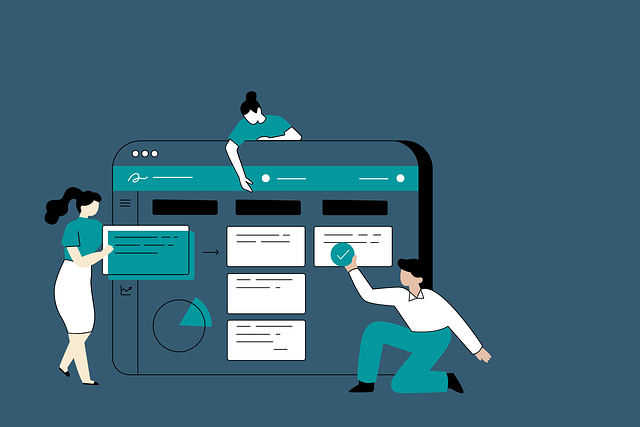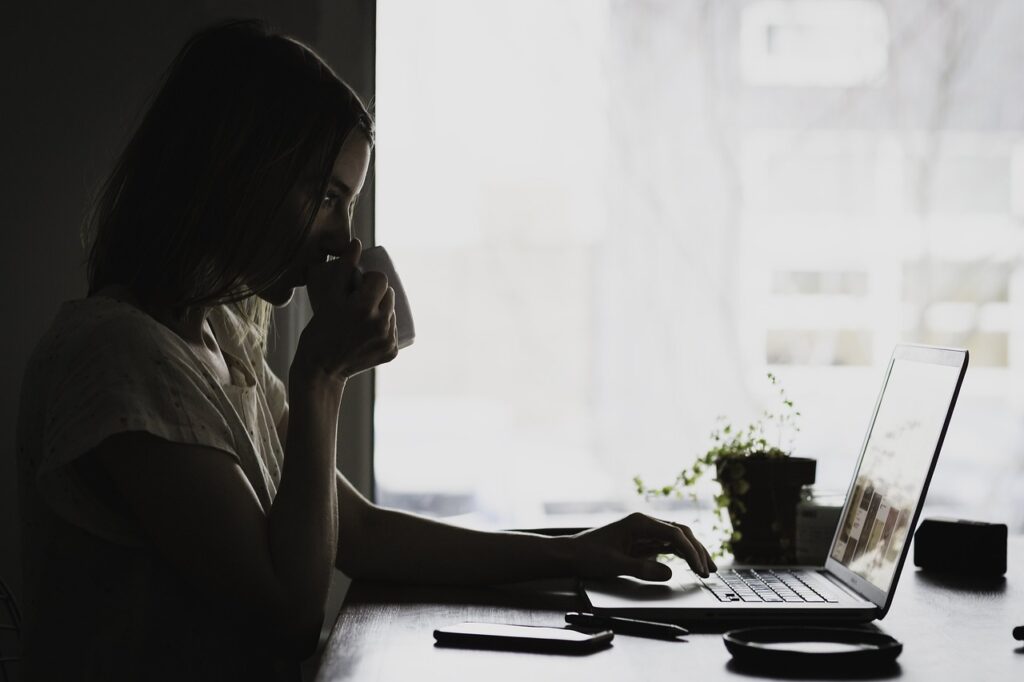Imagine for a moment you are trying to attract birds to your garden. If you put out just one type of bird food, you’ll attract a specific set of birds. But if you diversify the offering—seeds, suet, and maybe even a water feature—you’ll attract a wider variety of birds, each with its own preferences.
Now, think of your customer base as those birds. Different strokes for different folks; the more channels you employ in your marketing mix, the more types of customers you’re likely to engage. But it’s not as simple as throwing everything on the wall to see what sticks. Each channel requires a unique approach, and herein lies the art and science of multi-channel marketing.
Table of Contents
- Understanding Multi-channel Marketing: A Primer
- Channels and Their Unique Characteristics
- The Magic of Customization and Personalization
- Quantifying Engagement: The Metrics You Should Care About
- The Multi-Channel Approach to Lead Engagement
- Case Studies: Successes and Failures
- The Future of Multi-Channel Marketing
- Conclusion and Takeaways
Understanding Multi-channel Marketing: A Primer
Multi-channel marketing is the strategic deployment of multiple channels to reach and interact with potential customers. These channels can be traditional, like print ads and TV, or digital, like email and social media platforms. The aim is to provide consumers with a seamless and unified experience, regardless of how they choose to interact with your brand.
Why is it Important?
In a world where consumers are bombarded by content, multi-channel marketing aims to cut through the noise. With varying preferences for how to consume information and make purchase decisions, it’s crucial to meet your audience where they are. Research shows that companies with strong multi-channel marketing strategies experience a 9.5% year-over-year increase in annual revenue and a 7.5% decrease in cost per contact.
Synchronization Across Channels
One of the key challenges in multi-channel marketing is to provide a synchronized experience across all channels. That means that if someone sees an ad for a 20% discount on your Facebook page, they shouldn’t be greeted with an offer for just 10% off when they visit your website. Synchronization ensures a unified brand experience and eliminates customer frustration.

Related: Check out our free SEO suite

Channels and Their Unique Characteristics
The heart of multi-channel marketing lies in understanding each channel’s strengths and weaknesses, and tailoring your approach accordingly.
Traditional Channels
Television
Television, once the titan of marketing channels, still holds considerable sway, especially for brands targeting a broad demographic. Its strength lies in its ability to tell rich, emotive stories, making it especially effective for launching new products or building brand awareness. However, with the rise of streaming platforms and the decline in traditional TV viewership, its effectiveness as a primary channel might be waning.
Print (Magazines, Newspapers)
Print media has faced significant challenges with the digital revolution, but it’s far from dead. Niche magazines and local newspapers can offer highly targeted advertising opportunities. Print’s tactile nature gives it an enduring charm, making it perfect for luxury brands or targeting older demographics who still cherish the physical reading experience.
Radio
Radio is another traditional channel that’s undergone transformation. With the rise of podcasts and digital radio, there’s been a shift in how people consume audio content. Still, local radio remains a potent tool for regional advertising, while digital radio and podcasts offer segmented and specialized audiences.
Digital Channels
Social Media Platforms
From Facebook to TikTok, each platform caters to a unique demographic and supports specific content types. Instagram, with its visual focus, is ideal for lifestyle and fashion brands. LinkedIn, being a professional network, is more suited for B2B marketing. The key is to tailor content to the platform’s audience, maximizing engagement and relevance.
Email marketing, when done right, boasts one of the highest ROIs among digital channels. Its power lies in its personal nature – a direct line to your audience without the noise of social feeds. With advancements in automation and segmentation, brands can deliver personalized content directly to an individual’s inbox, increasing the likelihood of conversion.
Search Engines (SEO & SEM)
When people have a query or need, they turn to search engines. Ensuring your brand appears prominently in search results, either through organic search engine optimization (SEO) or paid search engine marketing (SEM), is crucial. These channels are intent-driven, meaning the user is actively seeking information or a solution, often translating into higher conversion rates.
Affiliate & Influencer Marketing
Word-of-mouth in the digital age has taken the form of influencer marketing. Tapping into influencers or affiliates that resonate with your target demographic can amplify your brand message. Trust is at the heart of this channel, with followers often valuing an influencer’s recommendation as they would a friend’s.
The Magic of Customization and Personalization
In the multi-channel landscape, sending generic messages won’t cut it. Consumers crave personalization – content tailored specifically to their needs and preferences.
Why Personalize?
A personalized experience can be the difference between a fleeting interaction and a lasting engagement. In fact, a study by Epsilon found that 80% of consumers are more likely to do business with a company that offers personalized experiences.
Data is the Key
The foundation of effective personalization is data. By analyzing data points like browsing behavior, purchase history, and interaction with past marketing campaigns, brands can tailor content to each individual.
Beyond Just Names
While addressing an email recipient by their first name is a good start, true personalization goes beyond that. It’s about recommending products based on past purchases, sending content that aligns with individual interests, or even adjusting marketing tactics based on the user’s stage in the buying cycle.
Ensuring Privacy
With great power (read: data) comes great responsibility. It’s crucial for brands to handle consumer data responsibly, ensuring privacy and compliance with regulations like the General Data Protection Regulation (GDPR). Transparent data practices build trust, a critical component in the customer-brand relationship.
Quantifying Engagement: The Metrics You Should Care About
Measurement isn’t just the domain of lab coats and calculators. In marketing, knowing what to measure and how to interpret those metrics can make or break your multi-channel strategy.
The Basics – Reach, Clicks, and Conversions
Sure, these metrics are the bread and butter of almost any marketing campaign. But within a multi-channel approach, their significance takes on new dimensions.
Reach
In a multi-channel world, reach is not just about how many eyeballs see your ad, but where those eyeballs are looking. Different channels will give you access to different segments of your target audience. Your aim should be a comprehensive reach that spans multiple demographics, locations, and behaviors.
Clicks
Clicks are a direct measure of engagement. However, not all clicks are created equal. For instance, a click on an educational blog post and a click on a ‘Buy Now’ button are miles apart in terms of purchase intent. Mapping clicks to the customer journey helps in understanding what your audience is looking for at different stages.
Conversions
At the end of the day, it’s conversions that fill the coffers. But again, a ‘conversion’ can mean different things at different stages of the customer lifecycle – from subscribing to a newsletter, to making an actual purchase, to becoming a repeat customer.
Advanced Metrics – Customer Lifetime Value and Channel Attribution
Customer Lifetime Value (CLV)
If you’re only measuring immediate ROI, you’re missing half the picture. CLV allows you to understand the value a customer brings over the entire course of their relationship with your brand. This is particularly relevant in a multi-channel strategy where some channels may serve as introduction points, while others excel at retention.
Channel Attribution
This is the science (and art) of assigning value to the various touchpoints a customer interacts with before converting. Is it your YouTube video, the retargeting ad, or the email newsletter that sealed the deal? Attribution models help you understand the weightage of each channel in your marketing mix.
The Multi-Channel Approach to Lead Engagement
Engaging leads in a multi-channel world isn’t about brute force; it’s about finesse. Imagine you’re a conductor leading an orchestra; each musician represents a channel. Played in harmony, the result is a symphony that delights the audience. Played out of tune, you’re looking at a cacophony that drives them away.
Building the Marketing Mix
The Four C’s
Just like the 4 Ps (Product, Price, Place, Promotion) in traditional marketing, think of the Four Cs for your multi-channel mix: Consistency, Coordination, Customization, and Calculation.
- Consistency: Your brand’s messaging and aesthetics should be consistent across channels.
- Coordination: All channels should work in tandem, like the various sections of an orchestra.
- Customization: Each channel has its unique advantages, tailor your strategy to maximize these.
- Calculation: Constantly measure and recalibrate. Remember, this is a dynamic landscape.
The Importance of Testing
The more channels you utilize, the more data you’ll accumulate. A/B tests, consumer surveys, and deep analytics allow you to understand what’s working and what needs to be rethought.
Case Studies: Successes and Failures
Real-world examples can offer a wealth of insights into the effectiveness of multi-channel marketing. By examining both the hits and misses, we can learn valuable lessons for our own strategies.
The Nike Phenomenon
Nike’s success isn’t an accident. It’s the result of an extraordinarily coordinated multi-channel marketing strategy. From iconic TV commercials to Twitter campaigns, from flagship stores to the Nike app, every touchpoint is meticulously designed. The brand doesn’t just sell sportswear; it sells a lifestyle. Their strategy uses personalization at its best: when you shop online, not only do you see targeted products, but the online environment itself adjusts to suit your interests and past behavior.
The Gap Logo Debacle
Sometimes even established brands make glaring errors. Gap’s 2010 decision to change its iconic logo and push it out across all channels without adequate customer input backfired spectacularly. The new design was universally panned, and within a week, Gap reverted to the old logo. The lesson? Consistency across channels matters, but so does listening to your audience.
The Future of Multi-Channel Marketing
In this ever-evolving landscape, staying ahead of the curve is crucial. Let’s explore some trends that could define the future of multi-channel marketing.
Artificial Intelligence and Machine Learning
These technologies are not just buzzwords; they’re increasingly becoming integral to marketing strategies. AI algorithms can predict consumer behavior, automate customer service through chatbots, and offer incredibly personalized experiences across all channels.
The Rise of Voice Search
As smart speakers like Amazon’s Alexa and Google Home become household staples, voice search is becoming a new frontier in marketing. Adapting to this shift requires a nuanced understanding of natural language processing and a focus on featured snippets in search engine optimization.
Virtual Reality and Augmented Reality
Imagine walking into a virtual store, picking up products, and examining them just like you would in a physical space. Or pointing your phone at your living room and seeing how different furniture pieces would fit. These experiences are already becoming a reality, offering brands new channels to engage consumers.
Sustainability as a Selling Point
In an increasingly eco-conscious world, sustainability isn’t just a nice-to-have; it’s often a deciding factor in consumer choices. Brands that effectively communicate their sustainability efforts across channels can capitalize on this growing sentiment.
Conclusion and Takeaways
Navigating the multi-channel marketing landscape is like sailing a ship through a sea full of opportunities and pitfalls. Success lies in knowing when to hoist the sails and when to drop anchor.
- Understand Each Channel: Not all channels are created equal. Knowing the strengths and weaknesses of each allows you to allocate resources wisely.
- Personalize: Customization isn’t a luxury; it’s a necessity. Use data intelligently to tailor experiences and you’ll win customer loyalty.
- Measure, Measure, Measure: From basic metrics like reach and clicks to advanced concepts like Customer Lifetime Value, measuring effectiveness is key to refining your strategy.
- Be Adaptable: The only constant is change. Keep an eye on emerging trends and be ready to adapt your strategy accordingly.
Multi-channel marketing offers the opportunity to engage with potential customers like never before. Done right, it can transform your brand from just another name in the marketplace to a cornerstone in your customers’ lives.
Read Next:
- What Is Bootstrapping? How to Tell If It’s Right for Your Small Business
- Is SEO Dead? Updated Edition!
- 7 Influencer Marketing Campaigns that You Must Copy!
- Use Code to Growth-hack Instagram Followers
- The Definitive Guide on Link Building for SEO
- Guest Posting on Steroids: Our Take!
- Why You Must Build Links for SEO: A Beginner’s Viewpoint




















Comments are closed.